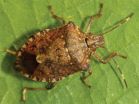(Press-News.org) Although nearly eight years have passed since a major oil spill in South Korea, compensation and recovery efforts appear to be far from satisfactory, and the affected communities continue to suffer the effects of the disaster.
UT Dallas' Dr. Dohyeong Kim, second-year doctoral student Soojin Min and two Korean scholars have found a considerable gap between the economic loss claimed by residents and the compensation they received after the Hebei Spirit oil spill. Only 11 percent of the claims were approved for compensation.
"I was surprised," said Kim, the lead author of the findings that were recently published in Ocean & Coastal Management. "Eleven percent is really low, compared to the other countries. It's a shame. My initial impression when I saw that finding was, 'Citizens have a lot less organized power in Korea.' It is striking to me."
The oil spill, about one-third of the size of the Exxon Valdez spill in Alaska in 1989, took place in 2007 when a barge hit the tanker Hebei Spirit, creating a hole in the cargo area. The leaking crude oil reached more than 200 miles away in less than a month, covering the rocky shore, sandy beaches and coastal wetlands.
Kim, associate professor of public policy and political economy in the School of Economic, Political and Policy Sciences, was intrigued by the disaster's social and ecological impacts as well as the compensation implications for those affected — particularly owners of small-scale fisheries and tourism businesses.
Kim said understanding the reasons behind the compensation gap is crucial for future oil spills.
Based on the findings, the researchers determined three possible reasons for the low percentage of compensation:
International Oil Pollution Compensation Funds are very strict and only allow the documented claims to be approved.
The focus was on the loss of direct use value. The social and ecological impacts to the ecosystems and the communities were not considered.
No economic evaluations conducted by academic scholars were considered.
When the researchers reviewed how other countries compensated for large-scale oil spills, they found that it was much greater — even more than 100 percent of the claims — after extensive governmental and legal involvements.
"I hope this research will help reduce this gap in the future and highlight the necessity for the compensation stakeholders to consider economic evaluation studies, such as studies using the contingent valuation method that some countries use to figure compensation," Min said.
The Hebei Spirit oil spill cases were unfriendly to the community and offered no scientific support, Kim said.
"Korea is a very pro-enterprise country," Kim said. "It needs to support the big enterprises like Samsung and Hyundai and LG because they have a big contribution to the Korean reputation, but sometimes they also have negative effects on actual communities in Korea because of the labor system and the environmental impacts."
The researchers hope the study helps inform decision-makers.
"I hope this paper gets some attention from not only Korea but other parts of the world. I hope, in the future, policymakers want to use these types of findings to be a little more toward the pro-community side instead of pro-enterprise." he said.
INFORMATION:
Dr. Gi-geun Yang of Wonkwang University and Dr. Chul-hwan Koh of Seoul National University also contributed to the study.
Study finds wide gap in compensation from '07 South Korean oil spill
2014-09-03
ELSE PRESS RELEASES FROM THIS DATE:
For kids with both asthma and obesity, which came first?
2014-09-03
ARLINGTON HEIGHTS, Ill. (September 3, 2014) – For years, doctors have known that there is a link between childhood obesity and asthma, but have found it difficult to determine which condition tends to come first, or whether one causes the other.
An article published in the September issue of Annals of Allergy, Asthma and Immunology, the scientific publication of the American College of Allergy, Asthma and Immunology (ACAAI), suggests it is more probable that childhood obesity contributes to asthma, although the connection is complex and has many factors.
"The relationship ...
You may have to watch what your fruits and veggies eat
2014-09-03
ARLINGTON HEIGHTS, Ill. (September 3, 2014) – People with food allergies always have to watch what they eat. Now, they may have to watch what their fruits and vegetables eat, as it seems it's possible to have an allergic reaction to antibiotic residues in food.
An article published in the September issue of Annals of Allergy, Asthma and Immunology, the scientific publication of the American College of Allergy, Asthma and Immunology (ACAAI), examines the case of a 10 year-old girl who had an anaphylactic (severely allergic) reaction after eating blueberry pie. Although ...
Brown marmorated stink bug biology and management options described in open-access article
2014-09-03
The brown marmorated stink bug (Halyomorpha halys) is an invasive, herbivorous insect species that was accidentally introduced to the United States from Asia. First discovered in Allentown, Pennsylvania in 1996, it has since been found in at least 40 states in the U.S. as well as Canada, Switzerland, France, Germany, Italy, and Lichtenstein.
In North America, it has become a major agricultural pest across a wide range of commodities. The insect is capable of eating more than 100 different plant species, and in 2010 it caused $37 million worth of damage to apples alone.
Now ...
Cosmic forecast: Dark clouds will give way to sunshine
2014-09-03
Lupus 4 is located about 400 light-years away from Earth, straddling the constellations of Lupus (The Wolf) and Norma (The Carpenter's Square). The cloud is one of several affiliated dark clouds found in a loose star cluster called the Scorpius–Centaurus OB association. An OB association is a relatively young, yet widely dispersed grouping of stars [1]. The stars likely had a common origin in a gigantic cloud of material.
Because the association, and its Lupus clouds, form the closest such grouping to the Sun, they are a prime target for studying how stars grow up together ...
Scientists discover how to 'switch off' autoimmune diseases
2014-09-03
Scientists have made an important breakthrough in the fight against debilitating autoimmune diseases such as multiple sclerosis by revealing how to stop cells attacking healthy body tissue.
Rather than the body's immune system destroying its own tissue by mistake, researchers at the University of Bristol have discovered how cells convert from being aggressive to actually protecting against disease.
The study, funded by the Wellcome Trust, is published today [03 September] in Nature Communications.
It's hoped this latest insight will lead to the widespread use of antigen-specific ...
Unplanned births out-of-hospital increases risk of infant mortality
2014-09-03
New research reveals that unplanned births out-of-hospital in Norway are associated with higher infant mortality. The findings published in Acta Obstetricia et Gynecologica Scandinavica, a journal of the Nordic Federation of Societies of Obstetrics and Gynecology, indicate that young women who have given birth at least once before (multiparous) and those living in remote areas are more likely to have unplanned deliveries, which may increase the risk of death in newborns.
In 2013, close to 60,000 babies were born in Norway according to the Statistics Norway. The country ...
Around 1 in 10 UK women has dry eye disease, requiring artificial tears
2014-09-03
The symptoms of dry eye disease include the sensation of grit in the eye, frequently accompanied by itching, burning and visual disturbance. The causes are poorly understood.
The researchers base their findings on almost 4000 women aged 20 to 87 (average age 57) from the TwinsUK cohort, drawn from the registry held at St Thomas' Hospital in London.
This cohort is widely regarded as representative of the UK general population, and has been used to look at a wide range of diseases and genetic traits over the years.
The prevalence of dry eye disease, and the frequency and ...
Stillbirth gap closing between indigenous and non-indigenous women, shows Australian study
2014-09-03
The gap in stillbirth rates between indigenous and non-indigenous women in Queensland, Australia, is closing, however indigenous women are still at risk of stillbirth due to preventable causes, find researchers in a new study published today (3 September) in BJOG: An International Journal of Obstetrics and Gynaecology (BJOG).
The Australian study used data from the Queensland Perinatal Data Collection and looked at 881,211 singleton births from 1995 to 2011. It aimed to assess the differences in stillbirth rates over time among indigenous (Australian Aboriginal and Torres ...
Estrogen increases cannabis sensitivity
2014-09-03
PULLMAN, Wash. - Smoking today's concentrated pot might be risky business for women, according to new research from Washington State University. The study is the first to demonstrate sex differences in the development of tolerance to THC.
Psychology professor Rebecca Craft showed that, thanks to their estrogen levels, female rats are at least 30 percent more sensitive than males to the pain-relieving qualities of THC—the key active ingredient in cannabis. Females also develop tolerance to THC more quickly. These sensitivities could increase vulnerability to negative ...
Discharged patients return to the ER because 'better safe than sorry'
2014-09-02
WASHINGTON – Patients who return to the emergency department within a few days of discharge do so principally because they are anxious about their symptoms and have lost trust in other parts of the health care system, according to the results of a study published online today in Annals of Emergency Medicine ("Return Visits to the Emergency Department: The Patient Perspective").
"When asked why they did not follow up as an outpatient, patients reported feeling that their symptoms were too severe to wait until their scheduled appointment or being instructed to return ...





